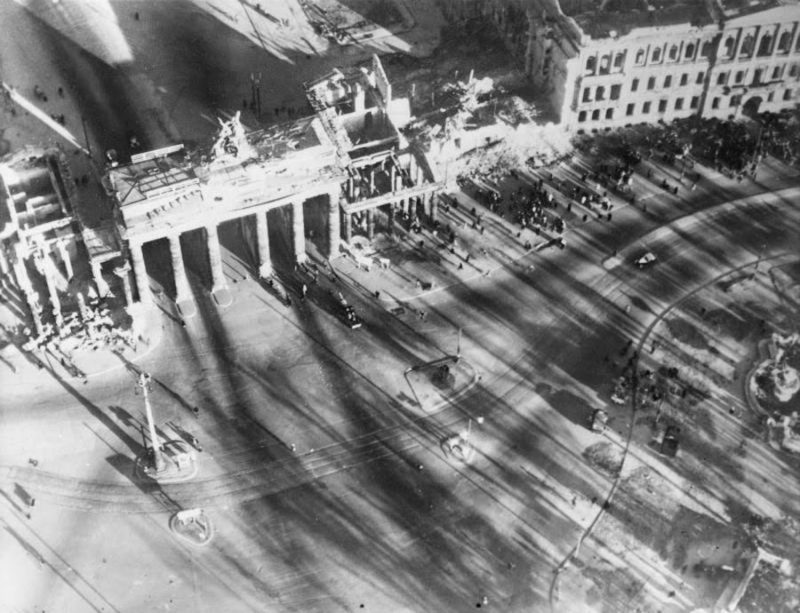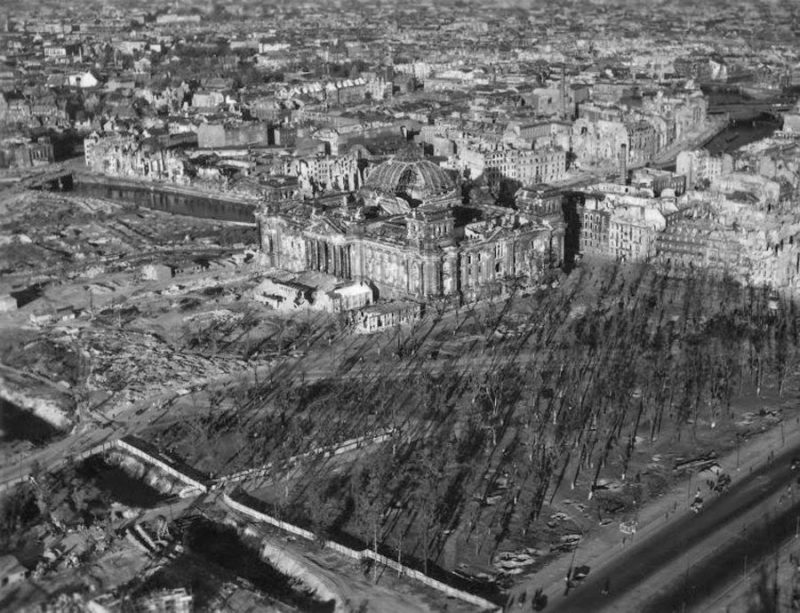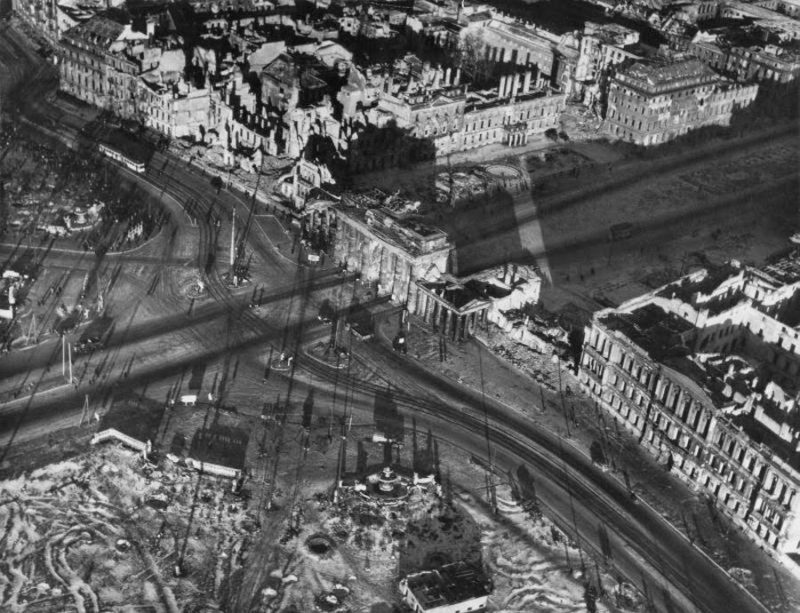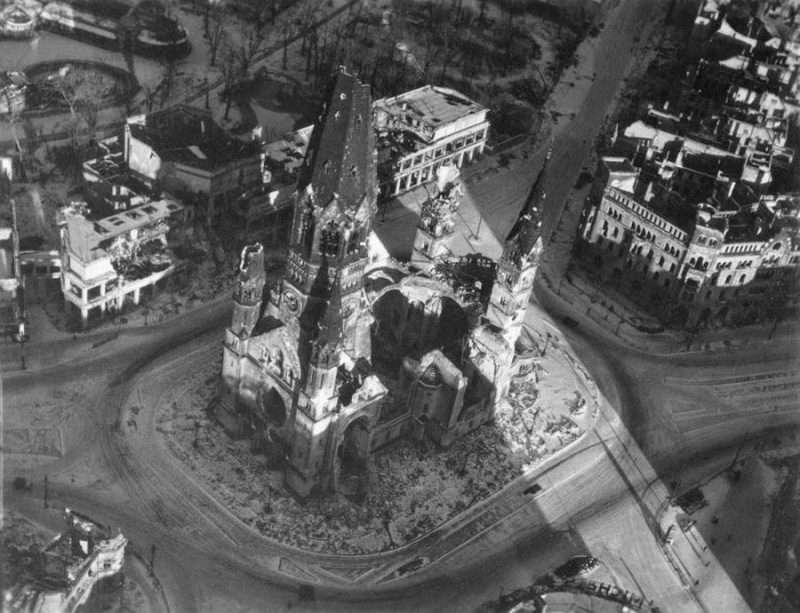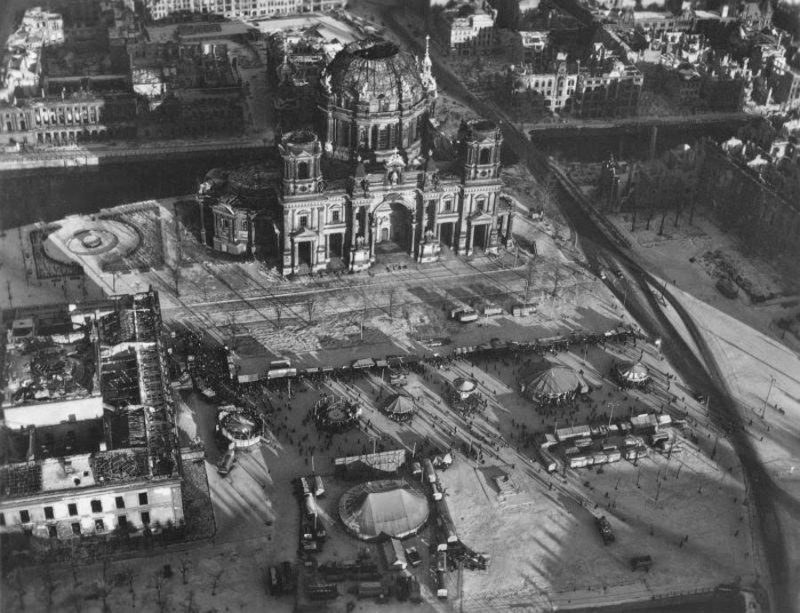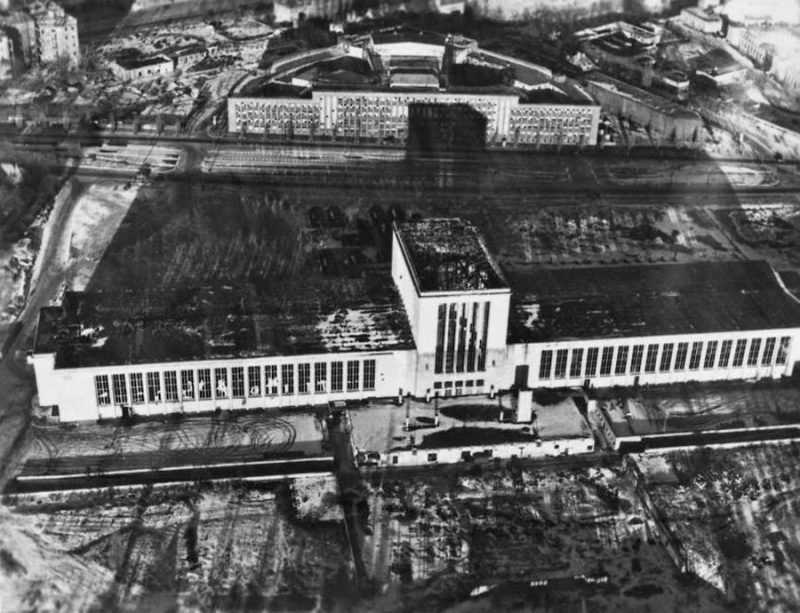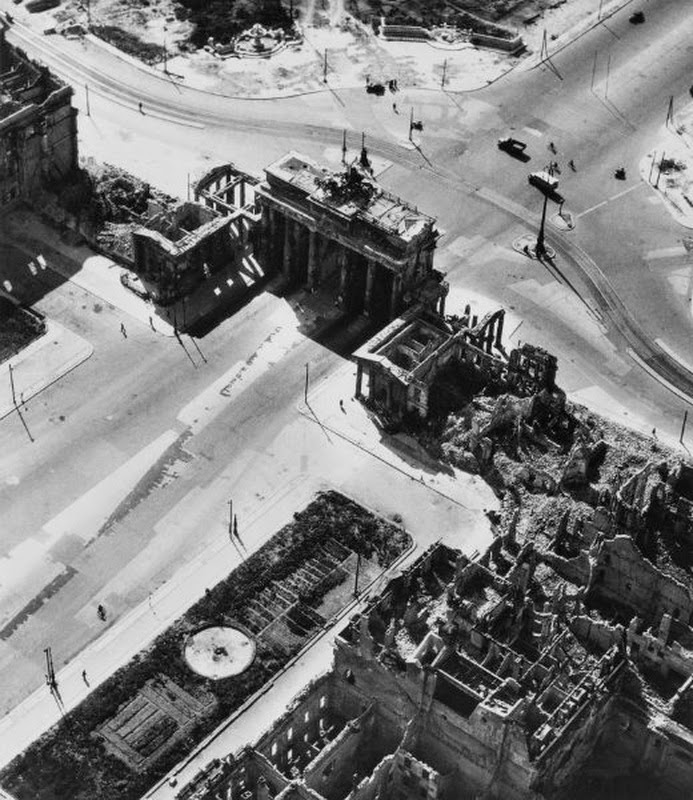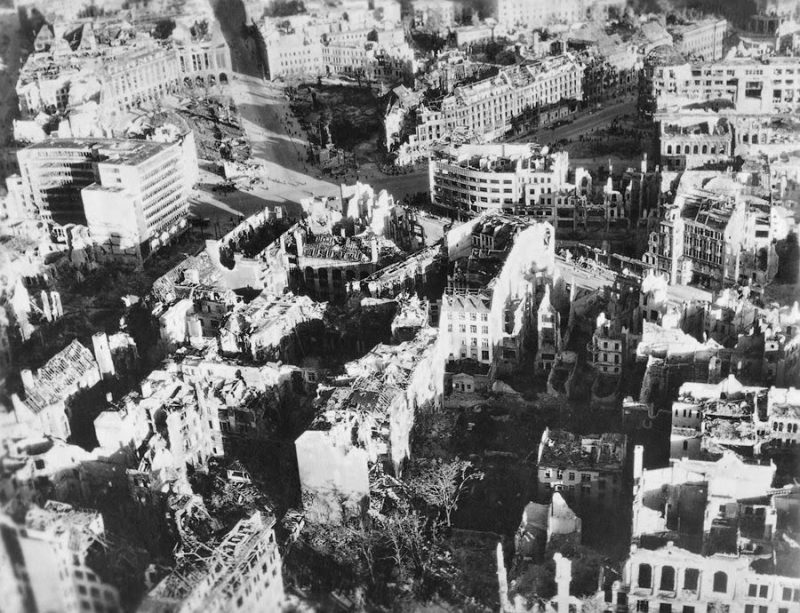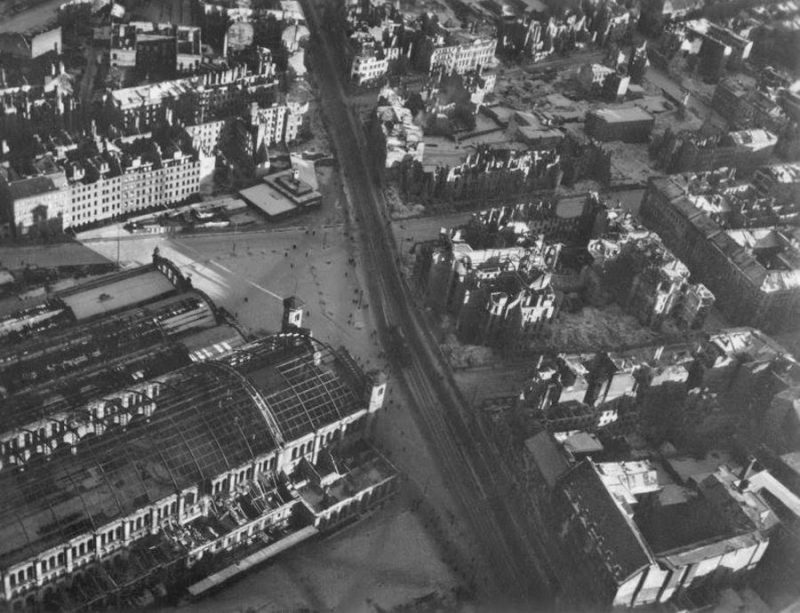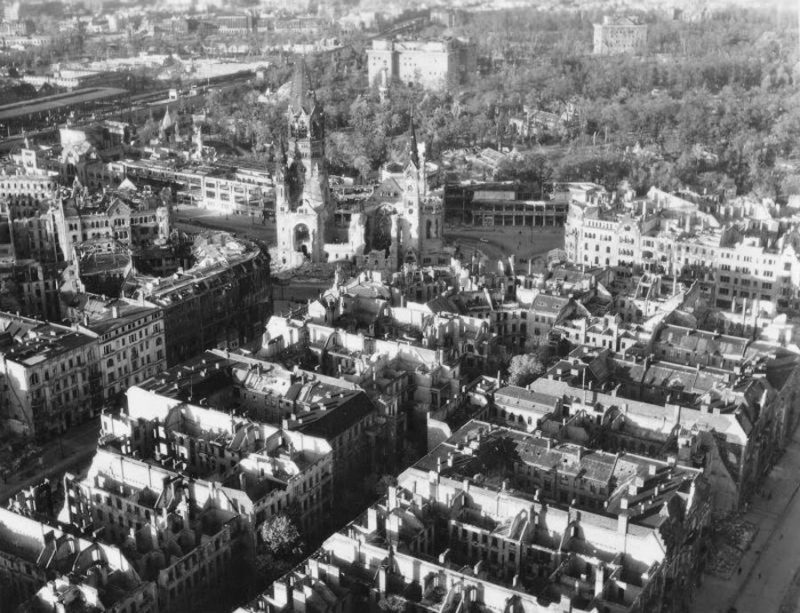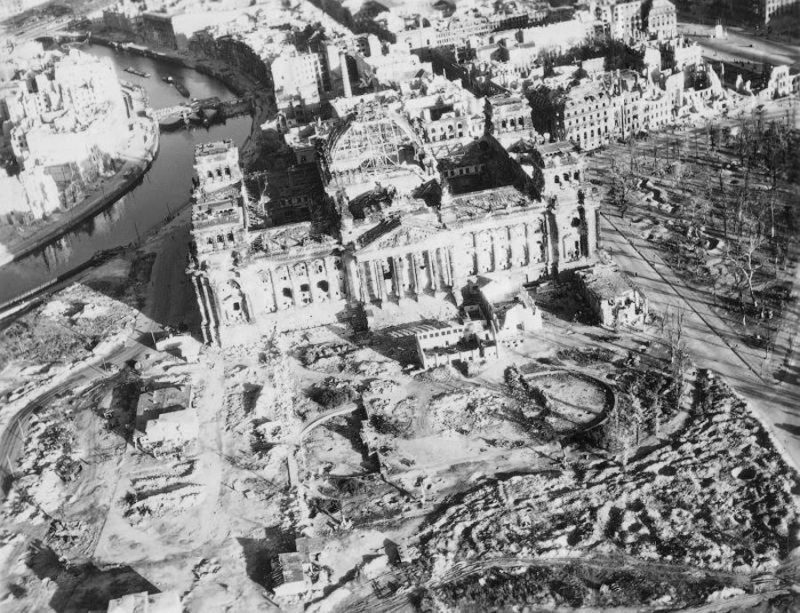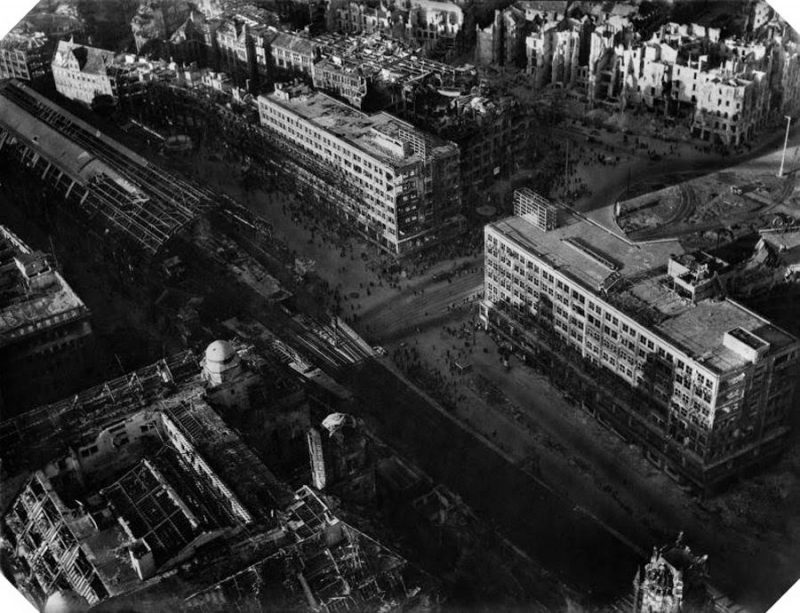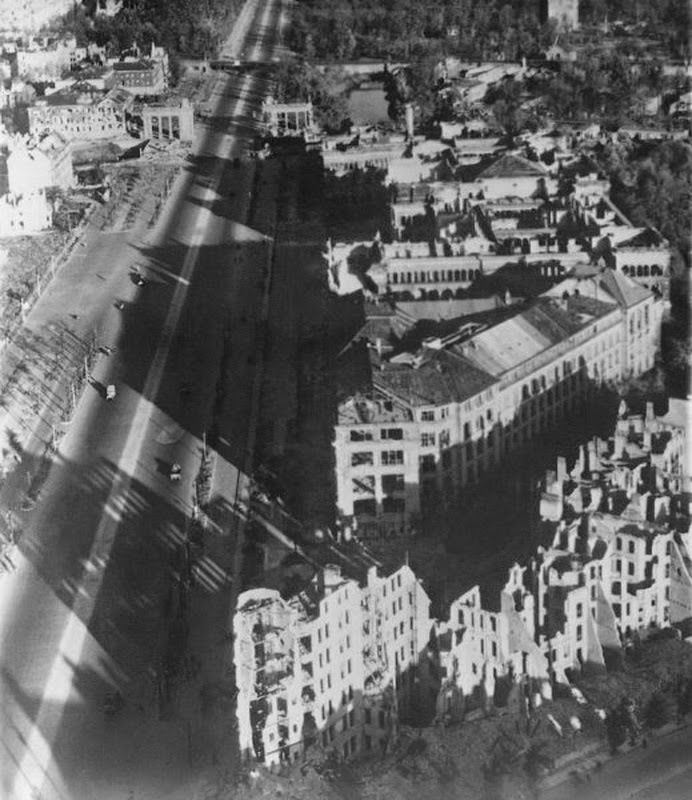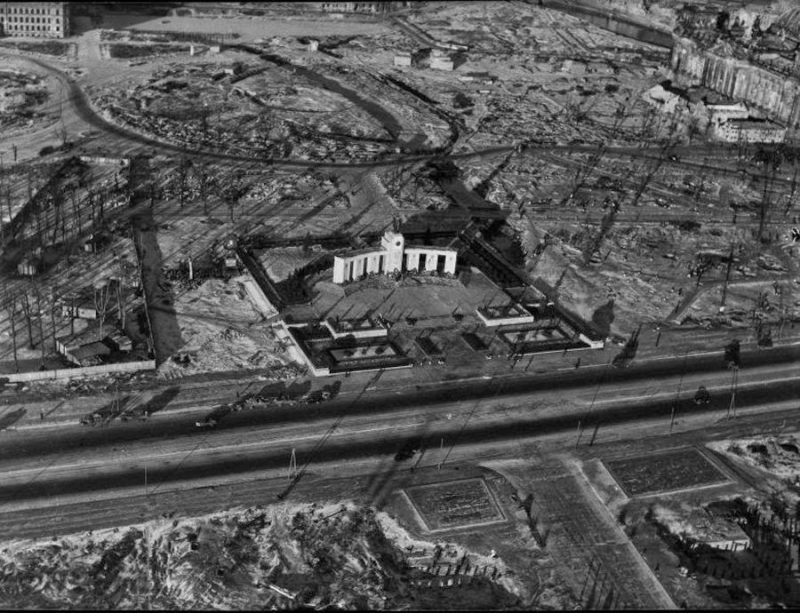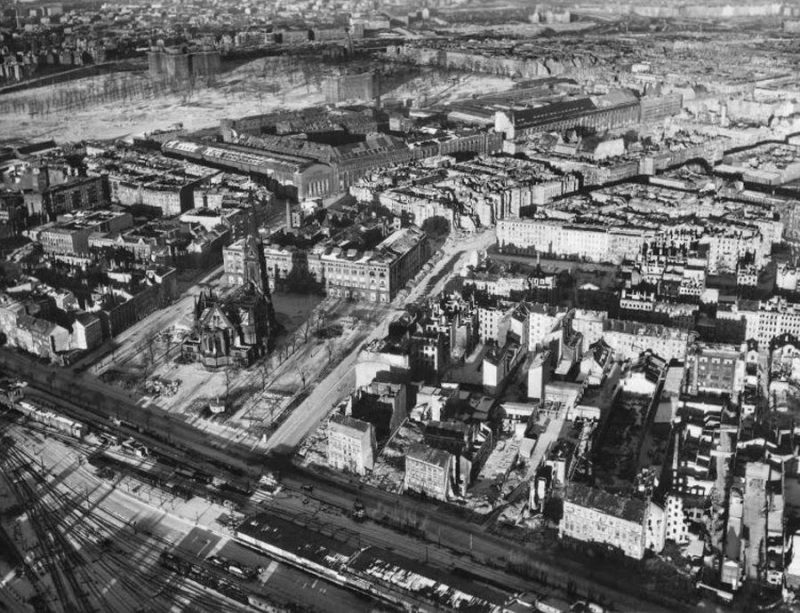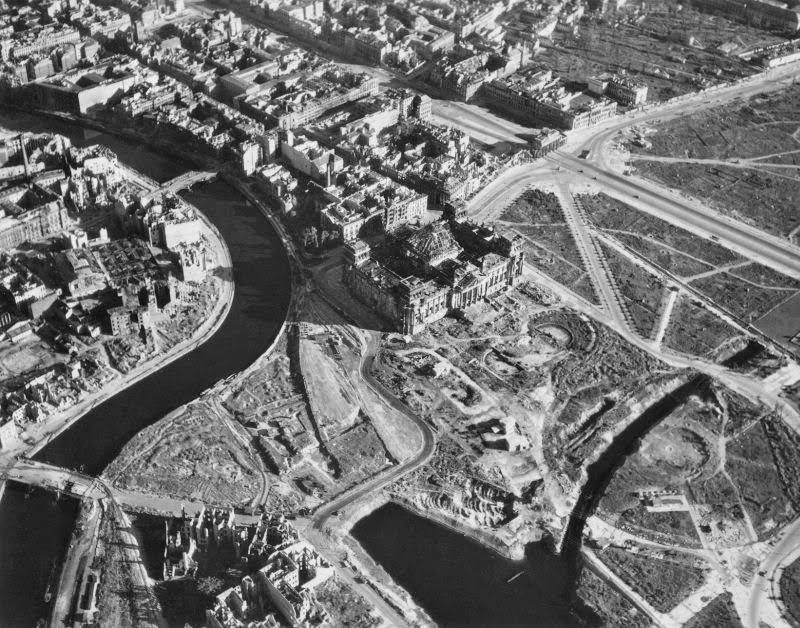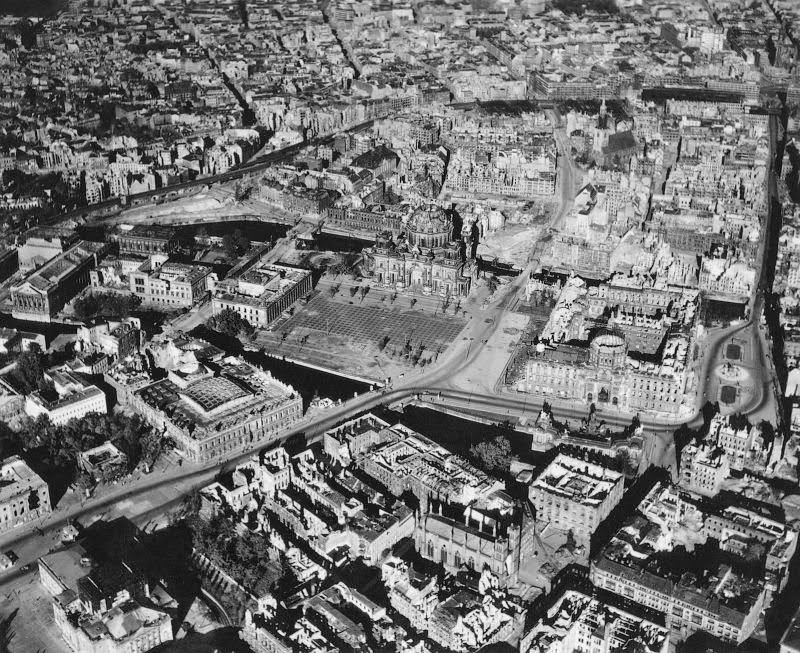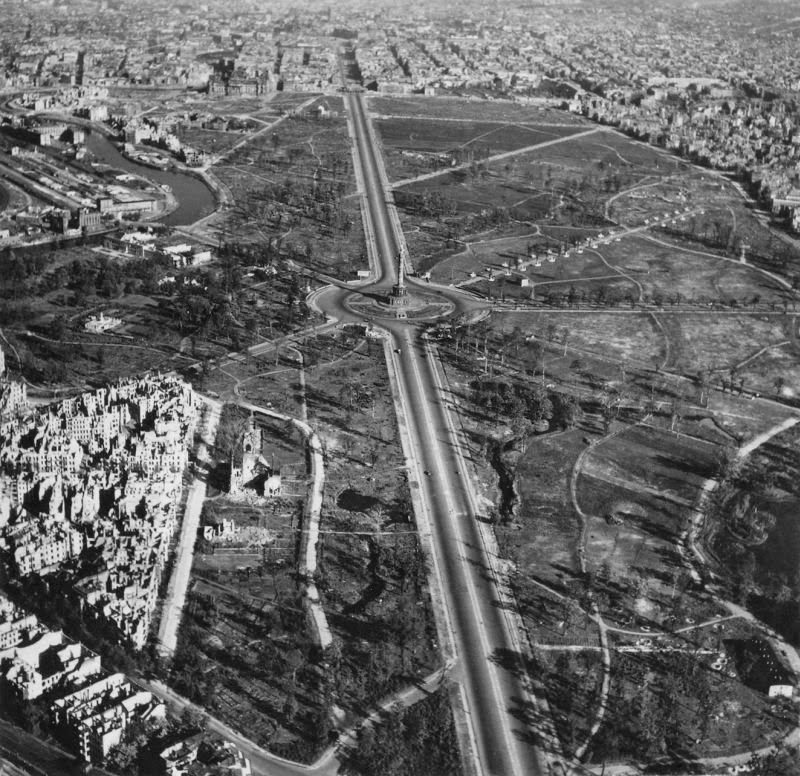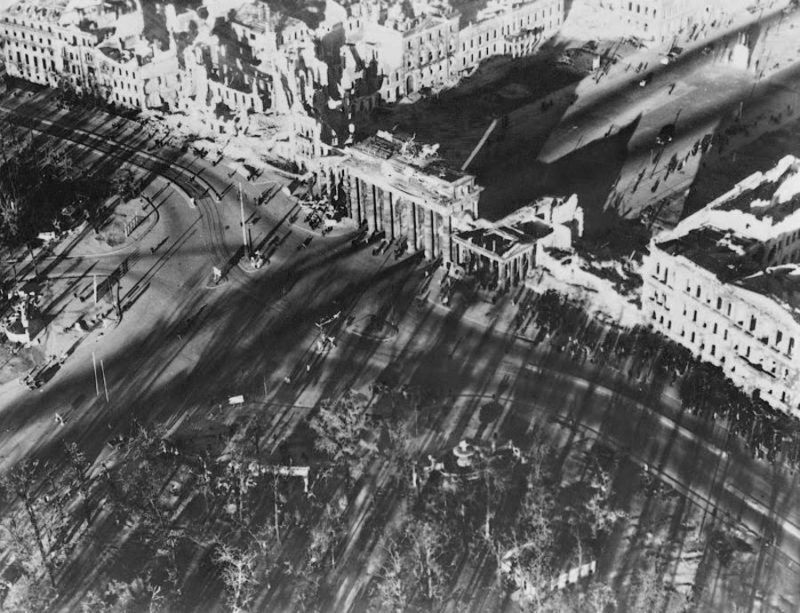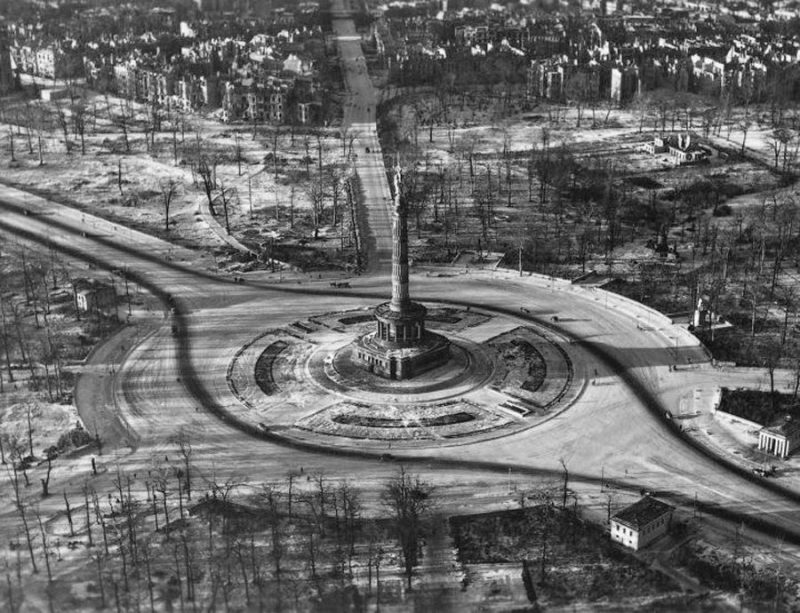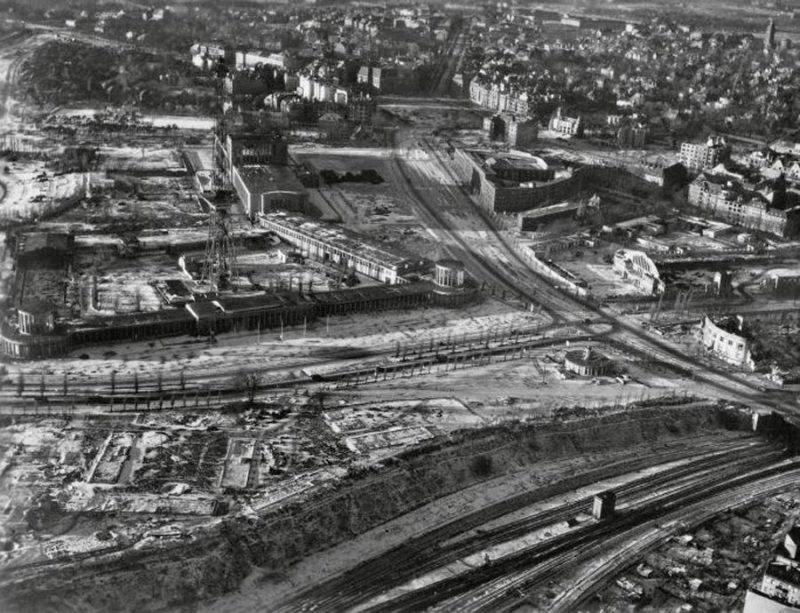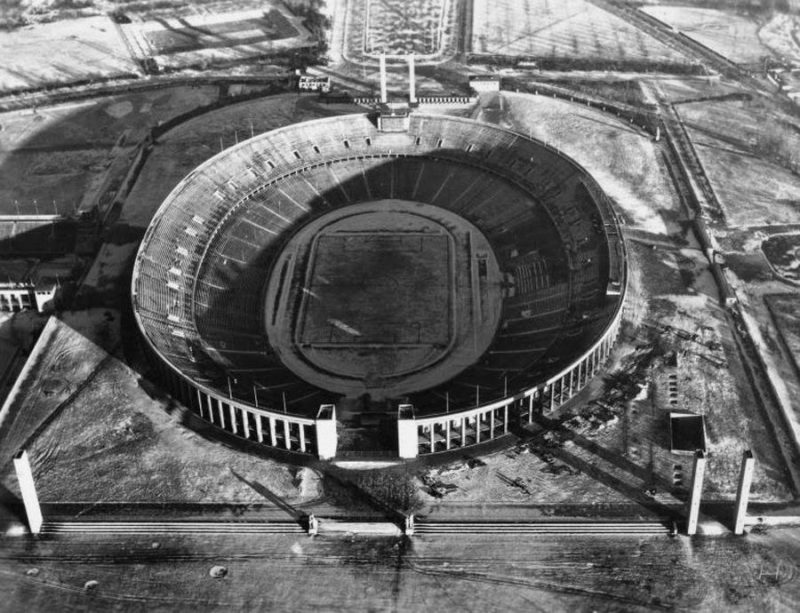Following the end of World War II, photographer Hein Gorny took spectacular aerial shots of the ravaged German capital. These were the first, if not only, photos of Berlin taken by a German photographer just a few months after the end of the war.
The square in front of Brandenburg Gate.
Brandenburg Gate
Berlin Reichstag: The towers of the building were expanded in 1941 to serve as flak towers. The cellar was used as a birthing clinic by the local hospital during the war.
The Victory Column.
Pariser Platz: The neoclassical Brandenburg Gate is the only remaining city gate of Berlin. It survived World War II despite severe damage to the quadriga on top and the complete destruction of one column.
Kaiser Wilhelm Memorial Church, badly damaged during an air raid on Nov. 23, 1943.
Berlin’s Cathedral caught fire during an air attack on May 24, 1944. It collapsed and the floor of the church crumbled, damaging a Hohenzollern crypt in the basement.
The exhibition grounds.
Berlin’s trade fair venue: The building with its striking facade was practically destroyed during WWII. Reconstruction began in 1946.
Olympic Stadium: The massive oval structure was designed by architect Werner March for the 1936 Summer Olympics.
Pariser Platz: The grand buildings around the 1.5-acre square east of the Brandenburg Gate were severely damaged during the air raids. On the right-hand side of the picture are the ruins of the former palace of Max Liebermann.
The view towards Leipziger Street: Around Potsdamer Platz and Leipziger Platz immediately after the war, only skeletal facades remain of the once magnificent residential and commercial buildings.
Stettin Station: Only one building was left standing from the train station built in 1842. Today Berlin’s Nordbahnhof station stands on this spot.
Flying towards the Kaiser Wilhelm Memorial Church, a sea of rubble and debris lay beneath the plane carrying the photographers Adolph C. Byers and Hein Gorny.
The Reichstag building, designed by architect Paul Wallot, was constructed 1884-1894. The war left it severely damaged. It remained a ruin until the 1960s.
In the last few days of the war, many buildings around Alexanderplatz square were destroyed. From left the photo shows, the Wertheim department store, the train station, the Berolina house, the Tietz shopping center and the Alexanderhaus.
The Technical College photographed just after the war. One year later it reopened as a Technical University.
The Soviet War Memorial in Berlin’s Tiergarten park. This memorial was built in 1945, shortly before this photograph was taken. It was erected in honor of the fallen soldiers of the Red Army.
St. Sebastian’s Church, in the Wedding district of the city, caught fire during a bomb attack in Nov. 1943. The aerial shot was taken in the winter of 1945/46.
A photograph looking down on the Spree River and the Reichstag, shattered by bombs and shells.
Central Berlin. This photo gives a view of the opera, the Pergamon Museum, and the New and the Old Museums. Also visible are the stock exchange, the Berlin Cathedral, Lustgarten, the Royal Palace, the Academy of Architecture and the Friedrichswerder church.
The victory column location photographed in 1939. In the background, the road leads to the Brandenburg Gate.
Via
